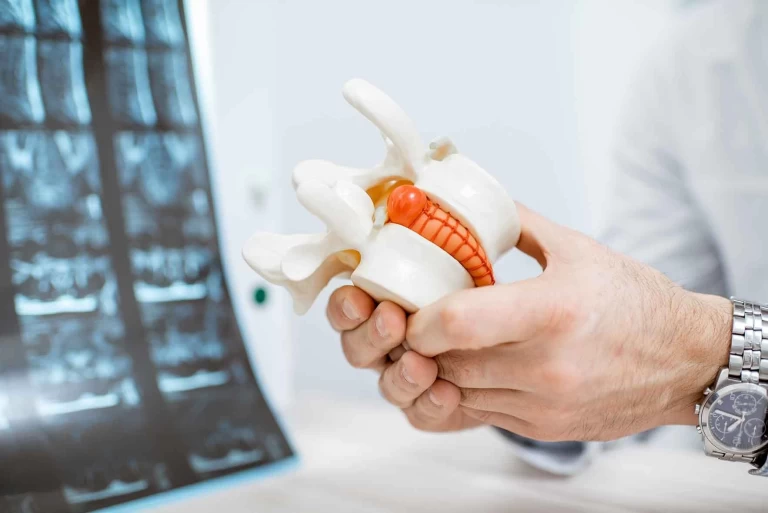
Upper cervical care, a specialized branch of chiropractic that focuses on the alignment of the top two vertebrae in the spine, the atlas (C1) and the axis (C2), is increasingly recognized for its role in addressing not only neck and head issues but also low back pain.
The connection between the upper cervical spine and low back pain might not seem obvious initially; however, through the intricate interplay of the nervous system and biomechanics of the spine, upper cervical misalignments can have a profound impact on lower back health.
By downloading the Digital Patient Chart mobile app you can better control your patient portal.
This article explores the role of upper cervical care in managing and alleviating low back pain, explaining the connection between these seemingly distant parts of the spine and how addressing the upper cervical spine can influence lower back function and overall well-being.
Understanding Upper Cervical Care
Upper cervical care is a precise form of chiropractic treatment that targets the alignment of the atlas (C1) and axis (C2), the first two vertebrae in the neck. These vertebrae play a critical role in supporting the skull, protecting the brainstem, and allowing for a wide range of head movements. Any misalignment in this region can affect the central nervous system, leading to issues throughout the entire body.
Chiropractors who specialize in upper cervical care focus on:
- Restoring the proper alignment of the atlas and axis
- Alleviating pressure on the brainstem, which controls many of the body’s automatic functions
- Improving communication between the brain and the body through the nervous system
The Connection Between the Upper Cervical Spine and Low Back Pain
The spine is a connected structure that functions as a unit. The position and alignment of the upper cervical spine have a direct influence on the rest of the spinal column, including the lumbar (lower back) region. When the atlas or axis becomes misaligned, it can create compensations throughout the spine, including the pelvis and lower back, leading to misalignments, muscle tension, and eventually pain.
Biomechanical Impact
A misalignment in the upper cervical spine can cause a domino effect down the spine, altering posture and creating abnormal stresses in the lower back. Some of the ways upper cervical misalignments can contribute to low back pain include:
Postural compensation: When the atlas or axis is out of alignment, the body may tilt or shift to compensate for the imbalance. This compensation often results in a change in posture, which can lead to uneven weight distribution across the lower back and hips, causing strain and discomfort.
Pelvic tilt and leg length discrepancy: Upper cervical misalignments may also lead to a pelvic tilt, in which one side of the pelvis is higher than the other. This tilt can cause one leg to appear shorter than the other, further contributing to uneven wear and tear on the spine, particularly in the lumbar region.
Chiropractors often find that correcting an upper cervical misalignment can even out leg length discrepancies and improve pelvic alignment, leading to relief from low back pain.
Muscle imbalance: The muscles of the back and core work together to support the spine.
When the upper cervical spine is out of alignment, the muscles in the neck and shoulders may become tense, leading to a ripple effect throughout the body. This imbalance can cause compensatory muscle tightening in the lower back, contributing to pain and discomfort.
Nervous System Impact
The upper cervical spine houses the brainstem, which is responsible for regulating many autonomic functions such as heart rate, blood pressure, and balance. Misalignments in the atlas or axis can interfere with the proper function of the brainstem and spinal cord, leading to widespread issues throughout the body.
Nerve interference: When the atlas or axis is misaligned, it can compress or irritate the nerves that pass through the upper cervical spine. This nerve interference can lead to dysfunction and pain not only in the upper body but also in the lower back. Chiropractic adjustments to the upper cervical region can restore proper nerve function, allowing the body to heal itself and relieve pain in the lower back.
Body-wide effects: Because the brainstem controls many vital functions, an upper cervical misalignment can cause issues that affect the entire body, including muscle coordination, balance, and posture. By restoring the alignment of the upper cervical spine, chiropractors help improve overall nervous system function, which can indirectly relieve low back pain.
How Upper Cervical Care Helps Low Back Pain
While upper cervical care is traditionally associated with treating conditions like migraines, neck pain, and vertigo, its impact on low back pain is becoming more widely recognized. Addressing upper cervical misalignments can provide relief from low back pain through a variety of mechanisms.
Restoring postural balance and correcting upper cervical misalignments helps restore proper posture, which reduces the strain on the lower back. When the head is properly aligned over the neck, the rest of the spine follows suit, allowing the lower back to function more efficiently and with less pain.
Improving pelvic alignment by addressing the upper cervical spine, chiropractors can help correct pelvic imbalances that contribute to low back pain. When the pelvis is aligned properly, the lower back experiences less stress, and leg length discrepancies often resolve, which can significantly reduce pain in the lumbar region.
Enhancing nervous system function as the upper cervical spine is closely related to the function of the nervous system, correcting misalignments can enhance the body’s ability to heal itself. With proper nerve communication restored, the muscles, joints, and tissues of the lower back can recover more effectively, reducing inflammation, tension, and pain.
Relieving muscle tension upper cervical misalignments often lead to muscle tension throughout the body, including in the lower back. Chiropractic adjustments to the atlas and axis can help relax tight muscles, improve circulation, and promote healing in the affected areas.
Case Studies and Research on Upper Cervical Care for Low Back Pain
Several studies and case reports have highlighted the effectiveness of upper cervical chiropractic care in treating low back pain. These studies suggest that even though upper cervical adjustments focus on the neck, they can have a profound impact on the lower spine.
Case Study 1: Relief of Chronic Low Back Pain Through Upper Cervical Care In one case study, a patient suffering from chronic low back pain experienced significant improvement after receiving upper cervical adjustments. The chiropractor corrected a misalignment in the atlas, which led to improved posture and reduced strain on the lower back, resulting in pain relief that lasted several months.
Case Study 2: Upper Cervical Adjustments for Pelvic Imbalance Another study involved a patient with a noticeable pelvic tilt and leg length discrepancy, both of which contributed to persistent low back pain. After a series of upper cervical adjustments, the pelvic tilt was corrected, and the patient reported a significant reduction in lower back pain.
These examples support the idea that upper cervical care can indirectly address low back pain by improving overall spinal alignment and function.
What to Expect from Upper Cervical Care for Low Back Pain
If you seek upper cervical care for low back pain, your chiropractor will likely begin with a detailed assessment of your spine. This may involve X-rays, posture analysis, and leg length measurements to determine if there is a misalignment in the upper cervical spine that could be contributing to your lower back pain.
The actual adjustment is typically gentle, with the chiropractor applying precise pressure to the atlas or axis to bring it back into alignment. Unlike traditional spinal manipulations, which often involve more forceful techniques, upper cervical adjustments are usually subtle but highly effective.
Most patients experience relief after just a few sessions, though some may need ongoing care depending on the severity of their misalignment and the duration of their symptoms.
Conclusion
Upper cervical care offers a holistic and non-invasive approach to treating low back pain by addressing the root causes of spinal misalignments and nervous system interference. While the focus of upper cervical chiropractic care is on the neck, its impact extends throughout the body, improving posture, relieving muscle tension, and enhancing nervous system function.
For those experiencing chronic or acute low back pain, especially when conventional treatments have failed, upper cervical chiropractic care may offer a valuable alternative by addressing the underlying issues that contribute to spinal imbalance and pain. By restoring proper alignment to the upper cervical spine, chiropractors can help patients achieve long-lasting relief from low back pain and improve their overall health and well-being.









Leave a comment